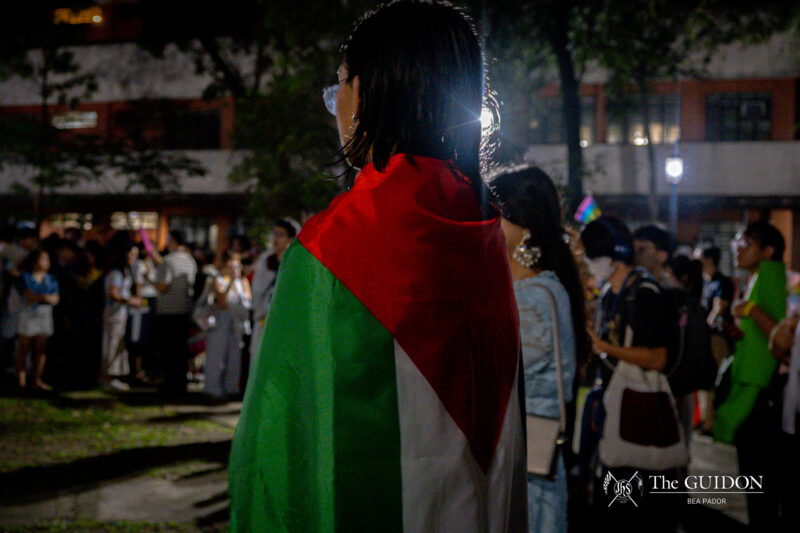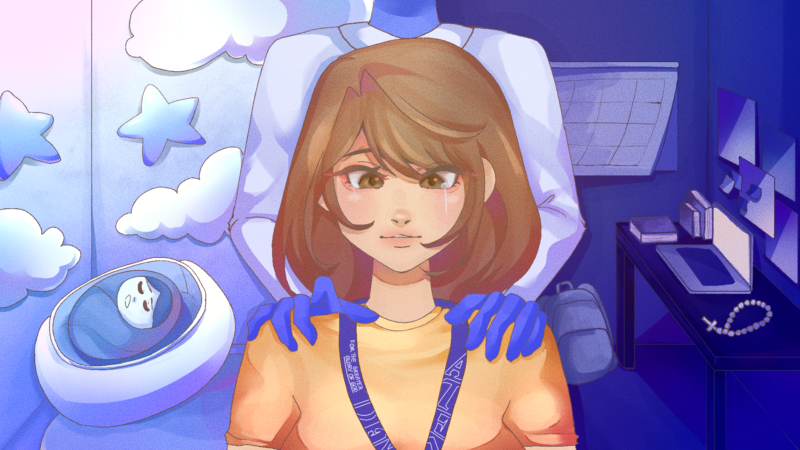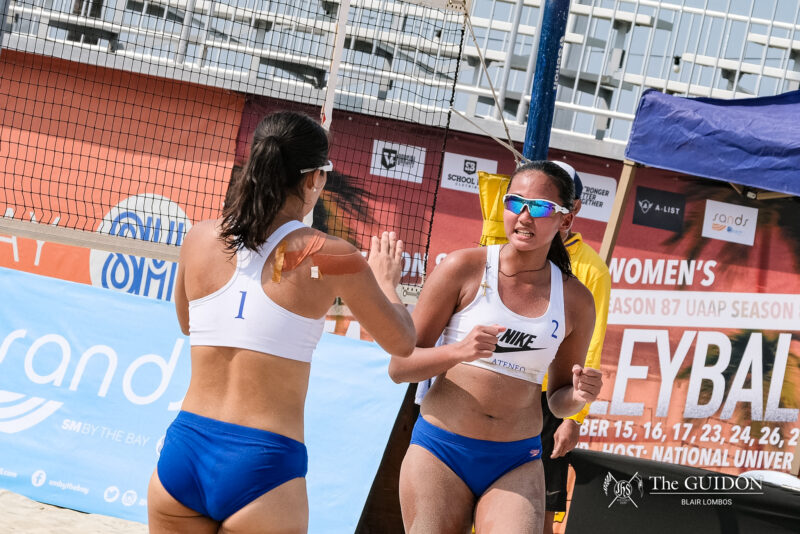A collection of raw yet crisply colored sketches adorns the few boards set up along the Social Sciences Foyer. Atop some nearby tables are all sorts of craft materials—colored markers and pencils, throngs of pastels, packs of glue and string, watercolor sets and a sprawl of blank pages. Amidst the supplies, a card reads: “Create an artwork that draws from a childhood memory.”
This was the scene for most of Articulate, a collaborative project held last January 28 to 30 between Heights Ateneo and Ateneo Peers. Dubbed as “a space to create,” the event provided an open opportunity for students to express themselves freely through their own written or graphic work. Here, participants were also able to unwind, at least for just a while, from the usual hustle and bustle of academic load.
In a university teeming with rigorous requirements, self-expression usually takes a backseat in our day-to-day habits. But what is often overlooked in the practice of the creative process is how, when directed properly, it can be a form of timely therapy in its own right.
Drawing the line
The experience of art as a therapeutic force isn’t a particularly new or peculiar discovery; after all, it isn’t rare to see musicians or thespians enter into a focused trance when engaged in their craft and eventually emerge more relaxed and composed.
This phenomenon isn’t a far cry from the initial distinction between “art as therapy” and “art therapy” as pointed out by Arsenio Alianan, a clinical psychologist and an assistant professor at the Psychology Department. He explains that the former has to do with the more everyday use of self-expression, while the latter is a professional field altogether.
Art as therapy involves a very informal and laidback dynamic between the practice of art and its natural effects of stress-relief and general recollection. The range of the crafts involved here is huge—it could be in music making, in stage performances and in physical activities, though it often takes the form of visual art with no pressures or expectations.
The profession of art therapy, on the other hand, is a branch of psychotherapy that successively emerged as a specialized field in Western societies halfway through the 20th century. Psychologists of that time had been influenced by movements that pushed for a more “moral treatment” in their methods with patients, and the development stayed and grew with the larger field over time.
“Many times as we talk about psychotherapy, many people think about it as counseling and talk therapy, primarily using words,” Alianan explains. “But in fact, if you incorporate art into psychotherapy, words may not be needed.”
While this breed of counseling is often directed towards survivors of natural calamities and the like, it can also be best used with people who suffer from trauma or depression. Likewise, the processes in art therapy take on a language of its own so that patients need not struggle to be succinct with their sharing. “Sometimes, children don’t have the words to explain what they feel, and [if you ask] them to draw it… you don’t [even] have to give them instructions, they could draw about their experiences,” he says.
Curated cures
Perhaps their presence hasn’t been very pronounced, but practices of art therapy have made their way into the Loyola Schools community through projects and advocacies done by some organizations. For instance, the volunteers at Kythe, an organization that caters to the psychosocial needs of pediatric patients, usually does arts and crafts with the children that they frequently visit.
Through this kind of art therapy, “children will have better ways of expressing their emotions, and letting out frustrations and anxieties built up in the hospital,” explains Harvey Parafina, the vice president for Hospitals in Kythe-Ateneo, Kythe’s student arm. At the same time, Kythe volunteers are then also able to better understand the children’s experiences through their artworks.
Aside from Kythe, there’s also the Ateneo Special Education Society (Speed), which caters to people with special needs (PWSNs). In their frequent area visits, they likewise borrow elements from art therapy as a means for PWSNs to develop cognitively and emotionally through their own works.
On the other hand, the idea for Articulate sparked from the interest to create a community of artists and writers in the Ateneo driven by the need for self-expression. “Our group decided that the very emotional and visceral release through art would be something that we could use, something to help engage in art making,” shares Heights Ateneo Editor-in-Chief Manuel Angulo.
While Heights Ateneo was in charge of the aesthetic and technical components of the activity, Ateneo Peers, an organization that caters to students’ emotional and psychological concerns, took care of the affective aspect of the project. “Peers volunteers took shifts at the booth and stood by in case participants would need to talk to someone, or in case they needed emotional support during the art therapy,” explains Paula Canlas, the vice president for Services in Peers.
Creative writing sophomore Patrick Moscosa describes his experience with Articulate as a fresh and soothing break from his usual routine. “I actually didn’t expect anything, I just wanted to do something different, something I haven’t done in a really long time,” he shares. “I actually didn’t expect it to be relaxing, but it was.”
Creative counseling
People often find pleasure in the simple act of expressing themselves through art. The person’s release of emotions, known in psychotherapy as “transference,” plays an important function in the process of art therapy, but only so many people are aware of its profound place in today’s society.
In an article entitled “A Consideration of Transference in Art Therapy” published in the May 1998 edition of The American Journal of Art Therapy, Pat Allen Bouye explores the idea of transference in art therapy. Bouye explains that transference is simply the projection of the client’s feelings and experiences to the therapist. What makes it different in art therapy is that the process of transference results to a clearer understanding of the feelings expressed by the client.
In art therapy, it is through the artworks that transference is achieved. Drawings, paintings and poems and the like can serve as gateways to an understanding of a person’s innermost ideas and sentiments.
For Canlas, this function of art therapy is crucial in this fast-paced world. People can pause and reflect on their experiences and express, or at least address them, through art. “It might not solve what we are worrying about or what we are afraid of in the long run, but it does—or at least it can—help,” she says.
Aside from its psychological worth, art therapy may also give people their first experience with art. “We [at Heights Ateneo] don’t think that there are bad ideas in art, only ideas that are unformed, or ideas that have yet to take on their best form. So what we did in Articulate—and in that sense also borrowing from art therapy—was to give people an outlet to give their ideas a first form,” explains communication junior and Heights Ateneo Web Editor Regine Cabato, one of the project heads of Articulate.
Art therapy opens endless possibilities for art and for psychotherapy. People can explore the leisure and technical sides of the craft, but at the same time make sense of their personal sentiments and ideas. “[People] might think that art therapy is too extravagant and abstract and I do not blame them—I do think that expression through art cannot ever be quantified and or be seen as data,” shares Parafina. “However, art therapy, especially for those who have gone through much suffering, can help people heal, and eventually grow.”
Editor’s Note: Regine D. Cabato is a member of The GUIDON Beyond Loyola Staff.
[seperator style=”style1″]A cure in the craft[/seperator]By Tricia T. Lao
Stressed and anxious? Give these forms of art therapy a try this summer! They have proven to be a surefire way to get rid of the blues and make a positive impact on the body.
[columns][two-columns]Sip and GoghUnleash your inner Vincent Van Gogh with the first-of-its-kind paint and sip studio in the country. Instructors will guide you in creating a replica masterpiece while you sip on a drink.
How it helps: According to studies, wine prevents heart disease because it is rich in antioxidants. Painting also improves your state of concentration and encourages creativity.[/two-columns] [two-columns]Tago Jazz Café
Tago is a jazz club where musicians can jam onstage. What better way to chill but to the tune of the saxophone?
How it helps: Jazz music is proven to stimulate the brain’s productivity level; it is also known to release emotional tension.[/two-columns][/columns] [columns][two-columns]Philippine Barista and Coffee Academy, Inc.
This place offers real coffee education for aspiring baristas or simply those who want to make pretty latte art in Barista 101, where topics like coffee knowledge, different brewing methods and milk texturing are tackled.
How it helps: Coffee serves as a good morning kick as it provides energy through natural minerals and nutrients.[/two-columns] [two-columns]Sev’s Cafe
Phil and Sarah Kay fans will be happy to hear that spoken word has a home in the Philippines: Sev’s Café. Spoken word poets and even newbies are more than welcome to take the stage and share their stories.
How it helps: Writing poetry has been proven to be therapeutic and listening to the art form can encourage healing and personal growth.[/two-columns][/columns]







